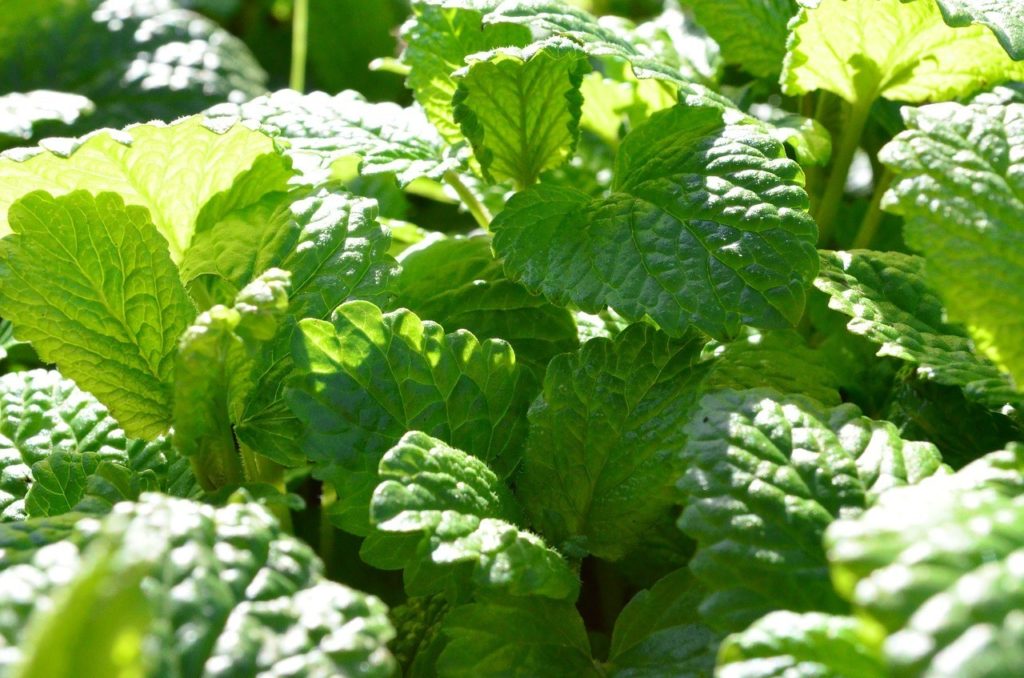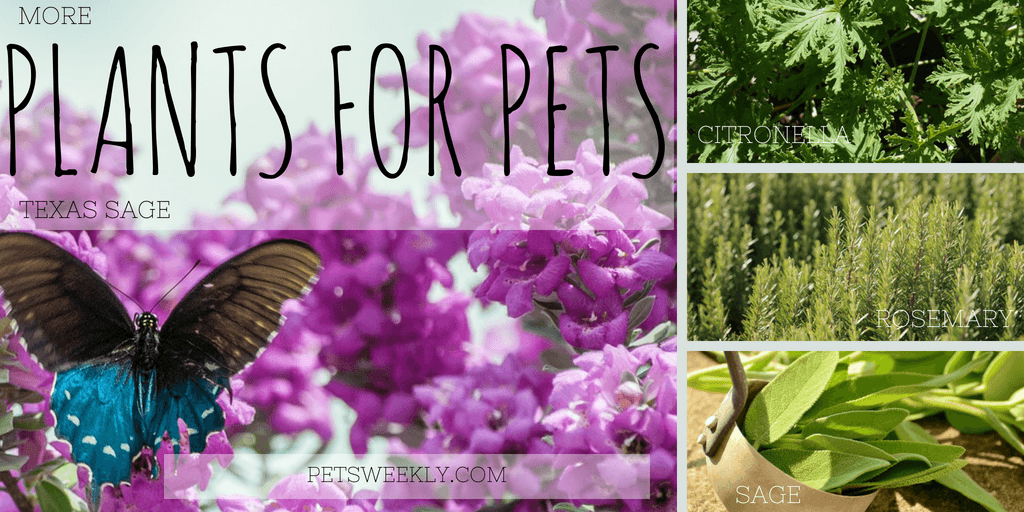Plants that Naturally Repel Fleas and Ticks
Share

Plants can be a great way to naturally repel fleas and ticks, or at the very least, keep insect invasions to a minimum. But, before you run out and pick up a dozen plants to add to your garden, there are a few things to consider.
First, make sure you choose plants that are not toxic to wildlife or your pets. Gardening is fun, but not when your pets start chewing on toxic plants. Be cautious to choose plants that will cause harm to your pets or wildlife.
Second, many of these plants can be very invasive (particularly those in the mint family). Please do your homework and use containers when appropriate. We would hate for anyone’s garden to get overrun by plants they don’t truly want growing in their garden!
Beware of common toxic plants
Many of the common herbs used to repel fleas are also dangerous to pets.
For example, Pennyroyal and Lavender are both members of the mint family. But, Pennyroyal (also known as “Flea Bane”) can be highly toxic to pets (and people), while Lavender is a natural calming aid that is generally deemed safe for use with dogs and cats.
Make sure you do your research and discuss options with your holistic veterinarian.
Other plants that have been used successfully used to naturally repel fleas and ticks, but may be dangerous to pets if used improperly include:
- Citronella (may cause skin irritation, diarrhea, loss of appetite in pets)
- Geranium may cause vomiting, anorexia, depression, skin irritation in dogs, cats, and horses
- Eucalyptus may cause vomiting, depression, weakness, salivation in dogs, cats, and horses
- Fleabane may cause gastrointestinal distress and skin irritation, in dogs, cats, and horses
- Tansy (aka Golden Ragwort) – can cause liver failure, weight loss, weakness, neurological problems, head pressing, etc in dogs, cats and horses.
- Bay leaves may cause vomiting or diarrhea in dogs, cats, and horses.
That doesn’t mean you can’t plant them on your patio, just focus on using containers that are hung from the rafters, or up high on a table. The plants above probably won’t kill your pets, but they can make them quite sick.
These are many other natural remedies that can be toxic to animals and should be avoided in the yard and garden. Fortunately, there are also families of plants that are both safe for pets and effective in all-natural pest control.
Safe Plants for Pets
We’ve listed a few of the more common plants and herbs that are great to use in yards with pets, but as in anything else, moderation is of key importance (learn more about LD50 and how to use herbal remedies around animals – particularly around cats). A little is okay. A lot is going to cause some problems.
Mint Family
The mint family has a number of great varieties that will help repel fleas and ticks (as well as mosquitoes and other pets).
Peppermint and Spearmint
Peppermint and Spearmint plants are my personal favorites for natural pest control. Not only are they naturally effective in controlling fleas, but (if used properly), they are safe for pets and wildlife. They smell great indoors and out, and you can make some amazing iced tea for yourself with the leaves.
Before planting, remember that members of the mint family are quite invasive and can easily take over your carefully managed garden. When working with mint plants, it’s best to utilize in-ground container gardening or keep totally separate from your garden to keep other plants safe.

Catnip
Why not plant something your cat will love? As a member of the mint family, catnip is a feline favorite, but also offers some protection from pests (especially fleas).
As a bonus, you can harvest and dry the cuttings for some DIY cat toys.

Lavender
Believe it or not, lavender is a member of the mint family as well. This plant is safe for pets and has the added benefit of being a natural moth and mosquito repellent. It smells wonderful and is a perfect addition to a patio.
Lavender is also a natural calmant, so we tend to use a lot of it.
Remember that there is a big difference in the quality of lavender and the form it comes in. Avoid anything “lavender-scented”. The fragrance doesn’t do anything but agitate your pets. Instead stay with planting lavender, or using a high-grade lavender hydrosol or essential oil.

Sage
We are very fortunate that many forms of sage happen to grow in our yard. Depending on your area, sage may grow wild in your yard, too.
Sage is a natural flea repellent and it not only looks and smells great (especially after a summer rain), it is safe for your pets.
Fortunately, most pets have little interest in eating this plant – but even if they do, they shouldn’t experience problems.
When selecting sage, stay with Common Sage or Garden Sage (Salvia officinalis) from the Lamiaceae family or Scarlet Sage (also known as Texas sage) from Labiatae family. All of these are considered safe varieties.
Forms of sage that are not considered safe include: Lantana, Yellow Sage, Red Sage or Shrub Verbena.

Lemongrass
This unique naturally lemon-scented plant is often used as a natural flea repellent. Lemongrass is considered “relatively” safe to use around pets, but may cause some stomach upset if your pets consume a large amount. It’s best to plant this in an area that isn’t quite as accessible.
Lemongrass (Cymbopogon citratus) is naturally high in citral and geraniol, which insects avoid.
If you’re a culinary fan, you may know this herb from your Thai dishes. It’s considered as an essential ingredient in Thai cooking.
Note: Citronella grass (Cymbogon nardus) is also in the lemongrass family and while it is very effective as a natural insect repellent, it can make pets your pets ill if they eat it. Citronella looks very similar to lemongrass, but has maroon-colored stems.

Rosemary
This plant is noteworthy not only as a natural repellent but as a natural source of amino acids. Rosemary is very safe to use around pets and quite effective at naturally warding off insects.
Rosemary grows wild throughout the Mediterranean region, but does quite well in most climates with a little care. The light-blue flowers can be a beautiful addition to any patio.
Learn how rosemary is being used in the pet industry!

No matter which plants you choose to naturally repel fleas and ticks, remember that moderation is key.
Toxicity is largely dependent on the specific animals. While most dogs or cats will not have a reaction to these plants, there are exceptions to every rule.
Keep a close eye on your pets for any reactions and know what types of plants your dogs and cats have access to so you can let the veterinarian know if you suspect a problem.









